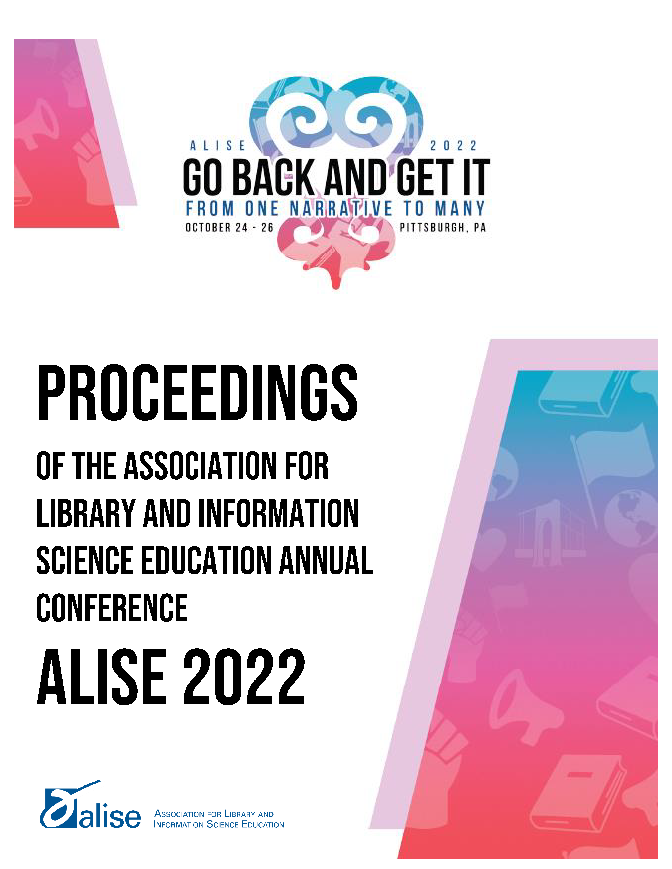Incorporating Marginalized LIS Educators into LIS Programs Through Remote Work Options
DOI:
https://doi.org/10.21900/j.alise.2022.1069Keywords:
LIS education, LIS programs, Remote work, Online education, BIPOCAbstract
The global pandemic has fundamentally changed the way that people work and learn, and has had a disproportionate impact on Black, Indigenous, and other people of color (BIPOC) (Marcelin, et al., 2021). Throughout the pandemic, all work (including higher education) moved to a fully remote work model. The goal of this panel is to explore the idea of remote work for library and information science (LIS) faculty in the long-term, and particularly discuss the positive implications that this work model could have for those who are BIPOC and/or otherwise marginalized. This is a critical discussion for LIS programs to engage in as the information professions currently face a moment of reckoning and they must work to bring equity for BIPOC colleagues and address the needs of LIS faculty.
References
Dali, K., Caidi, N., Thompson, K.M., & Garner, J. (2021). Tales from three countries and one
academic: Academic faculty in the time of the pandemic. The Library Quarterly:
Information, Community, Policy, 91(4): 371-384.
Jackson, B.A. & Reynolds, J.R. (2013). The price of opportunity: Race, student loan debt, and
college achievement. Sociological Inquiry, 83(3), 335-368.
Krysan, M. & Farley, R. (2002). The residential preferences of Blacks: Do they explain
persistent segregation? Social forces, 80(3), 937-980.
Kurland, N. & Bailey, D. (1999). The advantages and challenges of working here, there,
anywhere, and anytime. Organizational Dynamics, 28(2), 53-68.
Macklin, K.A. (2021). The influence of code-switching on Black women leaders: A
phenomenological study [Doctoral dissertation, Creighton University].
Manduca, R. (2018). Income inequality and the persistence of racial economic disparities.
Sociological Science, 5, 182-205.
Marcelin, J.R., Swartz, T.H., Bernice, F., Berthaud, V., & Christian, R., Infectious Diseases
Society of America. (2021). Addressing and inspiring vaccine confidence in Black,
Indigenous, and people of color (BIPOC) during the COVID-19 pandemic. In Open Forum
Infectious Diseases 8(9).
Pfeffer, F.T. & Killewald, A. (2015). How rigid is the wealth structure and why? Inter-and
multigenerational associations in family wealth. Population Studies Center Research Report,
-845.
Rafique, G.M., Mahmood, K., Warraich, N.F., & Rehman, S.U. (2021). Readiness for Online
Learning during COVID-19 pandemic: A survey of Pakistani LIS students. The Journal of
Academic Librarianship, 47(3), 102346.
Schur, L.A., Ameri, M., & Kruse, D. (2020). Telework after COVID: a “silver lining” for
workers with disabilities? Journal of occupational rehabilitation, 30(4), 521-536.
Subramanian, S. & Gilbert, T. (2021, March 11). A new era of workplace inclusion: Moving
from retrofit to redesign. Futureform. https://futureforum.com/2021/03/11/dismantling-
the-office-moving-from-retrofit-to-redesign
Downloads
Published
Issue
Section
License
Copyright (c) 2022 Gary L. Shaffer, Nicole Cooke, Africa S. Hands, Sandra Hirsh, Mega Subramaniam

This work is licensed under a Creative Commons Attribution-ShareAlike 4.0 International License.



